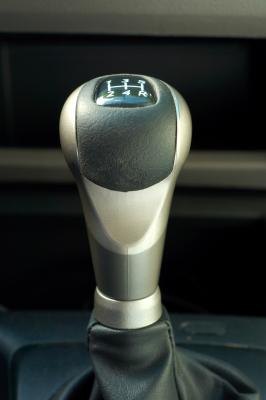Friday, May 16, 2014
How to Install Steel Bellhousing

Bellhousings are protective covers located on the engine-side of the transmission case. Stock bellhousings are comprised of aluminum or an aluminum alloy, making them susceptible to damage from impact. Steel bellhousings have a higher tensile strength and are theore stronger than aluminum counterparts. Steel bellhousings are considered crack, chip and shatter resistant, which help reduce the chance of expensive transmission repairs and injury if the transmission fails. The installation of a steel bellhousing also adds additional protection against impact during transmission servicing and from flying road debris.
Instructions
- 1
Lift the car using a floor jack and place it on jack stands positioned directly under the axles. Leave the floor jack in place under the front axle for safety should the jack stands fail. Place one additional jack stand under the engine for support.
2Drain the transmission fluid by removing the drain bolt under the transmission with a socket set. For automatic transmissions, remove the transmission pan bolts and drop the pan. Catch the oil in a drain pan and dispose of it at an auto parts store.
3Remove the transmissions gear shifter linkages. Start by pulling the trim ring off around the shifter using a screwdriver, then disconnect the linkage. If the shifter is on the steering column, remove the linkage from the underside of the car Place any snap rings and bolts in a plastic bag and label it for easy reinstallation.
4Disconnect the drive shaft linkages located at the differential and slide the drive shaft off the transmission. For front wheel drive transmissions, remove the CV axle linkages at the wheel hubs and slide them out of the transmission.
5Unbolt the transmission mount and engine attachment bolts using a socket set. Place a transmission jack under the transmission before removing the last two bolts. Remove the dust shield and slave cylinder. For automatic transmissions, remove the torque converter-to-flexplate bolts.
6Unclip sensors and wiring harness connections to the transmission. Use colored tape to label each wire and the transmission connector it clips into. Ensure no damage occurs to the wiring and repair previously damaged wiring immediately.
7Lower the transmission, remove the release arm and pilot bushing and unbolt the bellhousing from the transmission, removing any input shaft linkages between the transmission and bellhousing. For automatic transmissions, remove the torque converter. Unbolt the bellhousing from the transmission using a socket set.
8Attach the new bellhousing to the engine and check for alignment using a dial-indicator and make corrections specified by the bellhousing manufacturer. Once alignment is verified, attach the bell housing to the transmission and bolt it on. Reattach the torque converter or pilot bearing and release arm.
9Lift the transmission into place in the engine bay, reinstall the dust shield and bolt the transmission to the engine using a socket set. Install the transmission wiring and sensors, and reconnect the torque converter bolts or slave cylinder. Reconnect the drive shaft or CV axles, replace the drain bolt or transmission pan, fill the transmission with fluid and reattach the shift linkage and trim ring to complete the steel bellhousing installation.